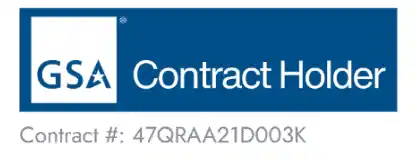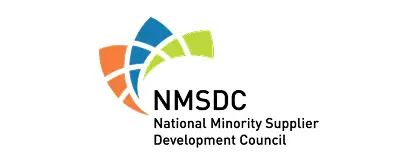What do the codes in Box 12 on my W-2 mean?
This article focuses on what the codes in Box 12 on Form W-2 mean. Reading your Form W-2 can be tricky and knowing what these Box 12 codes on the W-2 mean is very important.
This article is going to walk you through all possible codes on Box 12 on your W-2.
How to Complete Form W-2
If you are looking for information on how to read your W-2, this guide takes you through all the boxes on your W-2 form.
Now, back to what the codes on Box 12 on your W-2 mean. Here we go….
How to interpret the codes on Box 12 of your W-2
Note: Upper-case (capital) letters in Box 12 have different implications.
A and B: Uncollected social security and Medicare tax on tips. This amount represents the social security and Medicare tax on the tips you reported to your employer. There will be an amount here if your employer didn’t withhold social security or Medicare taxes on these tips. If you have one of these codes on your W-2, you cannot file a Form 1040EZ.
C: Taxable cost of group-term life insurance. You received group-term life insurance valued at more than $50,000 from your employer. The amount is also reported in Boxes 1, 3 and 5 of your W-2 and appears in Box 12 for your information only.
D, E, F, G, S, and H: These codes give you information about contributions to your retirement plan at work, and they are for your information only:
D: 401(k) plan – Elective deferrals to a section 401(k) cash or deferred arrangement. Also includes deferrals under a SIMPLE retirement account that is part of a section 401(k) arrangement.
E: 403(b) plan – Elective deferrals under a section 403(b) salary reduction agreement
F: 408(k)(6) plan – Elective deferrals under a section 408(k)(6) salary reduction SEP
G: 457(b) plan – Elective deferrals and employer contributions (including nonelective deferrals) to a section 457(b) deferred compensation plan
S: 408(p) salary reduction SIMPLE retirement account
H: 501(c)(18)(D) plan – Elective deferrals to a section 501(c)(18)(D) tax-exempt organization plan. See “Adjusted Gross Income” in the Form 1040 instructions for how to deduct.
J: Nontaxable sick pay (information only, not included in boxes 1, 3, or 5)
K: 20% excise tax on excess golden parachute payments. See “Other Taxes” in the Form 1040 instructions. Workers with this code on their W-2 you cannot file a Form 1040EZ.
L: Substantiated employee business expense reimbursements (nontaxable). This amount is for expenses that the employer reimbursed the employee for business expenses that were paid out of the employee’s own pocket and the amount reimbursed is greater than the amount actually spent. This amount isn’t included in income in Box 1, so the employee cannot deduct any of the expenses related to this reimbursement.
M and N: Uncollected social security and Medicare tax on group-term life insurance. If the employer pays for life insurance for employee, employee has to pay tax on premiums for the life insurance coverage that is in excess of $50,000. The amount of the excess premiums are included in Box 1 of Form W-2, so employee pays income tax on them when filing tax return.
P: Excludable moving expense reimbursements paid directly to employee (not included in boxes 1, 3, or 5). An employee with this code on form W -2 cannot file a Form 1040EZ.
Q: Nontaxable combat pay. See the instructions for Form 1040 or Form 1040A for details on reporting this amount.
R: Employer contributions to your Archer MSA. Report on Form 8853, Archer MSAs and Long-Term Care Insurance Contracts.
T: Adoption benefits (not included in box 1). Complete Form 8839, Qualified Adoption Expenses, to compute any taxable and nontaxable amounts.
V: Income from exercise of non-statutory stock option(s) (included in boxes 1, 3 (up to social security wage base), and 5). See Pub. 525, Taxable and Nontaxable Income, for reporting requirements.
W: Employer contributions (including amounts the employee elected to contribute using a section 125 (cafeteria) plan) to your health savings account. Report on Form 8889, Health Savings Accounts (HSAs).
Y: Deferrals under section 409(A) on an nonqualified deferred compensation plan.
Z: Income under a nonqualified deferred compensation plan that fails to satisfy section 409A. This amount is also included in box 1. It is subject to an additional 20% tax plus interest. See “Other Taxes” in the Form 1040 instructions.
AA: Designated Roth contributions under a section 401(k) plan.
BB: Designated Roth contributions under a section 403(b) plan.
DD: Cost of employer sponsored health coverage. The amount reported with Code DD is not taxable.
EE: Designated Roth contributions under governmental section 457(b) plan. This amount does not apply to contributions under a tax-exempt organization section 457(b) plan.
Box 13. If the “Retirement plan” box is checked, special limits may apply to the amount of traditional IRA contributions you may deduct. See Pub. 590-A, Contributions to Individual Retirement Arrangements (IRAs).
Box 14. Employers may use this box to report information such as state disability insurance taxes withheld, union dues, uniform payments, health insurance premiums deducted, nontaxable income, educational assistance payments, or a member of the clergy’s parsonage allowance and utilities. Railroad employers use this box to report railroad retirement (RRTA) compensation, Tier 1 tax, Tier 2 tax, Medicare tax and Additional Medicare Tax. Include tips reported by the employee to the employer in railroad retirement (RRTA) compensation.
Note: Keep Copy C of Form W-2 for at least 3 years after the due date for filing your income tax return. However, to help protect your social security benefits, keep Copy C until you begin receiving social security benefits, just in case there is a question about your work record and/or earnings in a particular year.





